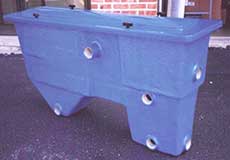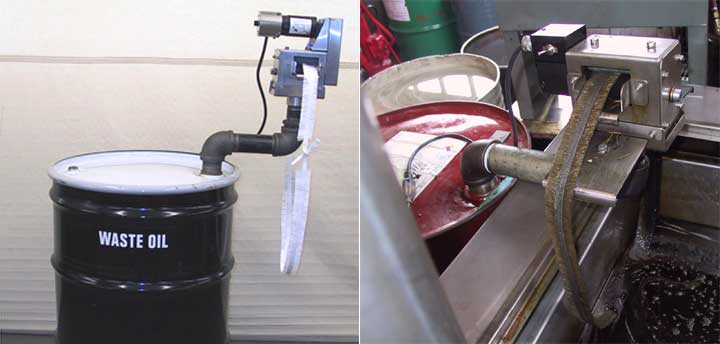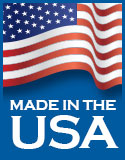Oily wastewater is a very common type of wastewater generated by industrial facilities. The metal working, wire drawing, machine building, ink manufacturing, some food processing operations and others generate oily wastewater streams. Before considering techniques for evaporation, it is important to understand the nature of oil in water. Oil can take two forms in water—either free or emulsified. Free oil consists of droplets larger than 30 microns and will readily float given some time. Emulsified oil consists of droplets smaller than 30 microns and will not float but rather stay suspended throughout the water.
When there is a small quantity of free or emulsified oil in a waste stream, the water can simply be put into a wastewater evaporator as is. During evaporation the oil may accumulate in small pockets on the water’s surface, and the remaining oil’s concentration levels increase. Since the levels in the original wastewater stream were low, the increase in concentration during evaporation should not pose a problem. In a traditional wastewater evaporator, you would be left with all the oil that was in the original stream reduced by 90 percent. If you are using a RunDry EvaporatorTM you will simply have a small amount of oil left at the end of the cycle.
 In the case of a wastewater source that has high levels of free oil and low levels of emulsified oil, it is best to pre-filter the stream to remove most of the free oil. Oil/water separators operate according to Stokes Law, which defines how oil droplets float upwards in water. Free oil droplets float to the surface of water where they can be easily skimmed into a waste oil drum. However, take care when pumping wastewater into the oil/water separator. If you use a submersible pump or a centrifuge pump, it will mechanically emulsify the free oil because the impeller acts like a kitchen blender. Diaphragm pumps will yield a better result because once the free oil is skimmed off in the oil/water separator, the water can be pumped or gravity fed into the wastewater evaporator.
In the case of a wastewater source that has high levels of free oil and low levels of emulsified oil, it is best to pre-filter the stream to remove most of the free oil. Oil/water separators operate according to Stokes Law, which defines how oil droplets float upwards in water. Free oil droplets float to the surface of water where they can be easily skimmed into a waste oil drum. However, take care when pumping wastewater into the oil/water separator. If you use a submersible pump or a centrifuge pump, it will mechanically emulsify the free oil because the impeller acts like a kitchen blender. Diaphragm pumps will yield a better result because once the free oil is skimmed off in the oil/water separator, the water can be pumped or gravity fed into the wastewater evaporator.
When you have a wastewater stream with low levels of free oil and high levels of emulsified oil, it’s important to note that emulsified oil, unlike free oil, cannot be easily filtered. Filtering emulsified oils is achievable with additional equipment and effort; however, that would be expensive and unnecessary. Without pre-filtration, the wastewater can be pumped into the evaporator for processing. As before, when the water is evaporated, the concentration level of the emulsified oil will increase. Since the original level of emulsified oil was high, the evaporation process results in a very high level of emulsified oil. As a result, thousands of micro droplets of oil can “bump” into each other and team up to form larger droplets of oil. If those newly formed droplets become larger than 30 microns, they will become free oil that will float. If there is a significant amount of free oil floating inside the wastewater evaporator tank, it can actually become thick enough to cover most of the surface like a blanket. The problem is that a blanket of oil like that can suppress the steam trying to escape from the surface of the water and drastically reduce the evaporation rate.
When dealing with high levels of emulsified oil, the solution is to periodically remove the free oil by turning the evaporator off overnight, which allows a heavy layer of oil to float to the surface by morning. That layer, which can have a 1/8 to 1 inch thickness, can then be skimmed from the surface. There is a variety of ways to skim this layer from the surface, but the two that seem to work the best are a wet/dry ShopVac or a MopClear skimmer. If you choose a ShopVac it’s best to keep it dedicated to this task because it will become contaminated with oil. Though the ShopVac simply sucks the oil from the water’s surface, it takes practice to be able to collect the oil only. The MopClear unit is very effective at removing the oil in a short amount of time with minimal water entrainment. This picture shows how one machine shop arranged to roll the MopClear into place above the wastewater evaporator to collect the waste oil. After the oil is skimmed, you can activate the wastewater evaporator and continue to top it off with fresh wastewater. This process can be repeated as often as needed.

David N. Lyman, president of RunDry Evaporators™, is a mechanical engineer with 40 years of industrial experience.

